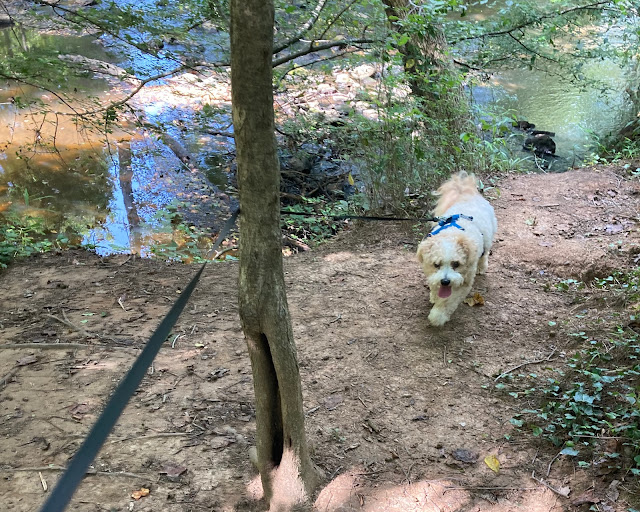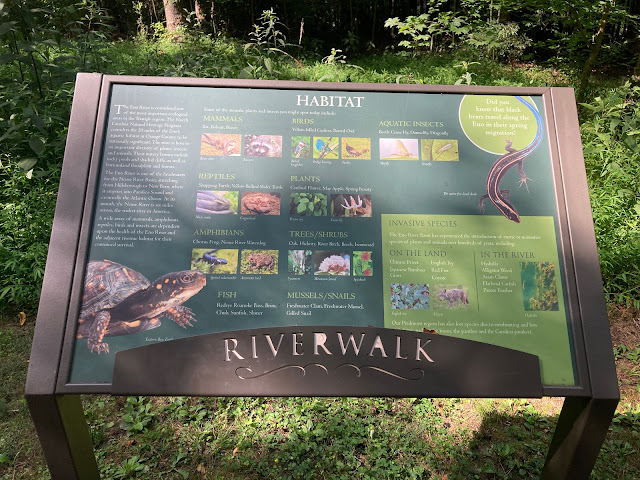Here is a list that I compiled of what I consider the basic most important things to know to keep you safe and make your hikes more enjoyable.

1. Pick The Right Trail For You
Recognize your abilities and pick a trail that you can successfully complete and enjoy safely.
I recommend to check the park’s website ahead of time to learn their trail information system that includes the length and nature of the trails, so you can plan accordingly.
If you are being spontaneous, visit the information center and ask for maps or any other type of informational brochure, read carefully any trailhead kiosk with map and information notices, or ask a ranger for details on the difficulty level of trails. Rangers can also provide more in depth information and trail recommendations. Click here to learn more about trail signage.
If bringing a pet along, consider your pet's abilities as well. Age, size, breed, built, fur are all big factors to consider. Bigger more athletic built dogs are more suitable for long hikes than small ones or older dogs who might get heatstroke, a heart attack, dehydrated, or develop joint and bones issues if pushed too hard. I recommend to do your research and ask your vet about the outdoor activities that your dog can join.
 |
| My pooch son Sunny hiking with me. |
If you have any medical conditions, consider that as well. You may even want to discuss your plans with your healthcare provider.
2. Wear The Right Hiking Attire 
Always check the weather before you head out on your hike and dress accordingly. If you are just getting started exploring the outdoors with short simple trails, any outdoor outfit adequate for the season and weather, and shoes appropriate for the terrain, would do. Once you start to advance to more challenging conditions and terrain, however, your hiking outfits and gear can make the difference between having fun or being uncomfortable and/or unsafe – whether that be the wrong footwear blistering your feet, or feeling too hot, drenched in sweat, too cold, or wet. A good pair of tennis shoes would do for paved and urban pathways, but sturdy, rubber-soled hiking boots with ankle support are best for dirt and gravel trails and most wild nature hikes. I recommend that you visit your local REI or other outdoor sport wear and equipment shop and ask for recommendations on the right clothes and equipment for your specific hike or outdoor adventure and style.
3. Bring Water & Food
Think about how long you will be out on your hike and pack water, and if applicable, food that does not need to be cooked that contains good nutritional value in order to keep your energy level high. Nowadays there are plenty of water bottles and healthy energy boosting snack options to choose from.
4. Wear Protection From Harmful UVB Rays
To avoid painful sunburns, premature signs of aging, skin cancer, and other sun damage, wear a sunscreen with a sun protection factor (SPF) of at least 30 and apply it generously to all exposed skin: face, neck, ears, and the back of your hands. You should read the instructions of your specific product, but a rule of thumb is to reapply every two hours, or more frequently if you sweat or swim. I prefer using an SPF 50 mineral sunscreen with the active ingredients of zinc oxide and/or titanium dioxide. SPF 30 will protect you from around 96.7% of UVB rays and an SPF of 50 will protect you from about 98% of UVB rays. Anything beyond SPF 50 makes very little difference in terms of risk of sun damage, and no sunscreen offers 100% protection from UVB rays. Blue Lizard, Badger, and Baby Organics are brands of mineral sunscreen that I've tried and recommend.
5. Ward Off Mosquitoes & Ticks
Wear an insect repellant that contains DEET, IR3535, Picaridin, oil of lemon eucalyptus (Para-menthane-diol), or other EPA approved repellent; follow label instructions, and reapply as needed. Repellents, sleeved clothing, long pants, socks, and netting are the best ways to protect yourself from insect bites.
Other tips to repel insects:
- Treat clothing, footwear, and gear with products containing permethrin. Even just treating the footwear can dramatically reduce your risk
- Check your clothing and your body for ticks during your hike.
- Reduce the exposure to ticks by hiking in the center of trails. Ticks can't jump, so they crawl up vegetation and wait for hosts to brush against them. Avoid wooded and bushy areas with high grass and leaf litter.
- Carefully inspect your body, clothing, gear, and pets for ticks after recreating.
- Bathe within two hours of your hike to wash ticks off your skin before they bite.
- Tumble clothes in dryer on high heat for an hour.
Removing a tick safely:
- Use fine-tipped tweezers to grasp the tick as close to the skin as you can.
- Pull upward with steady, even pressure. Don’t twist or jerk the tick.
- After removing the tick, clean the bite area with rubbing alcohol and your hands with soap and water.
- Tape the tick in cotton with alcohol to the date of your hike in your calendar, to give to your doctor in case you get any tick-borne illness symptoms. Antibiotics are effective in treating bacterial tick-borne illnesses and should be used if an infection is diagnosed.
6. Be Aware of Wildlife
My favorite thing, and the reason why I choose hiking in nature to stay fit, is to be surrounded and delighted by Nature and its abundance of diverse and interesting flora and fauna. I know all the names of the trees, most plants, and animals that I encounter on my daily hikes around my home. I take notice of the changes in them, and get excited when my natural environment reveals something new. The progression of leaves growing back on the trees nearing Spring, existing and new greenery and wild flowers, moths, butterflies, birds, rabbits, turtles, deer, cats, even some pretty interesting insects. This spring we had an abundance of cardinals and blue jays from what I'd notice in previous years, for instance.
What is not so dreamy or fun, though, is brushing up against poisonous plants, mistaking toxic mushrooms or wild berries for edible ones, or getting attacked by a wild animal that you get too close to.
Some and the most commonly encountered poisonous plants are: Poison Ivy, Poison Oak, Poison Sumac, Stinging Nettle, Poison Hemlock, Snowberry, Buttercups, Manchineel, Deadly Nightshade, Pokeweed, and Bittersweet. Click here to see photos of them so that you know what to look out for while hiking. Another good reason to hike in the center of the trails and avoid bushy areas with high greenery, is so that you don't accidentally brush up against poisonous plants. Have you heard the old saying: "Leaves of three, let it be"? Those notorious leaves of three are the hallmark characteristic of poison ivy, which can cause and incredibly itchy rash.
If you think you have come in contact with or ingested a poisonous plant, call the poison control center immediately. Unless you really know what you are doing and know the site is not being sprayed with pesticides or other harmful chemicals, do not count on snacking edible plants or fruits in your hikes – bring your own snacks. Many edible-looking berries and mushrooms are toxic. I've been hiking for many years and know of many edible plants and mushrooms, yet, I wouldn't put my life at risk unless I'm with a friend that is much more educated than me in edible wild life and knows they are safe to eat.
The most common (possibly dangerous) wild animal that hikers come across are snakes. I recommend looking at pictures and reading about the ones that you may encounter in the specific area where you are hiking, and educate yourself in differentiating between non-venomous and venomous.
 |
| Helpful infographic from Snake-Removal.com |
While not all snakes are venomous, all snakes can bite in self-defense or if stepped on. So watch your step!
Educate yourself on responsibly watching wildlife. Check out the park or site’s website (if it has one), go to the information center, and/or read any informational signs you may encounter, to learn about the flora and fauna on your hikes. While we have the amazing opportunity to view plants and animals as they live and interact with each other in their natural habitats, with that privilege comes responsibility. We are responsible for our own safety as well as the safety of the wildlife and their ecosystems.
 |
| Informational Sign. |
Enjoy your experience watching wildlife on your hikes!
7. Don't Count On Your Cell Phone
You are most likely to find yourself without cellular coverage and reception in remote areas, so don't count on your phone as a means of communication. If counting on using other of your cell phone's tools, keep the battery fully charged. Searching for a cell signal can quickly drain your phone's battery, so consider turning off your phone or switching it to airplane mode until you need it.
 |
| Helpful infographic from the National Park Service |
8. Tell Others Where You Are Going
Always tell at least one trusted friend or family member that is not going on the hike with you where you are going, and your estimated return time. Just in case you don't return when you are supposed to and can't be reached via cell, someone can call for help and have this information to give to the search and rescue teams. It's always smart to expect the best but prepare for unforeseen emergencies.
I hope that you find these basic hiking guidelines helpful. Happy trails!



















